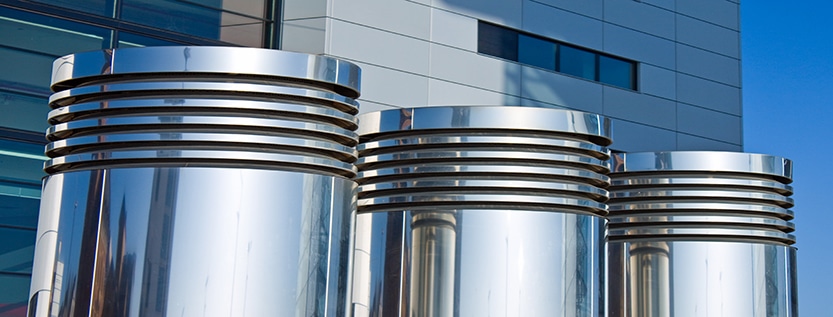
Technical Systems in external Areas
Planning of technical installations in external areas
As a rule, the term technical building equipment, abbreviated TGA, refers to equipment and systems that are located within a building and are installed there in a fixed location. However, in order to ensure smooth operation in buildings, various technical installations are also required in external areas.
What are technical installations about?
They are systems or equipment that are necessary for the operation of the building but are located outside the building. Sometimes they are located in annexes and are thus at least indirectly connected to the building. In other cases, they are free-standing installations, but still located on the land belonging to the building.
Typical technical systems in external areas include:
Sewage plants
This category includes, for example, surface and building drainage plants such as road gullies, yard drains, infiltration ditches, bridge drains, drainage channels, sewage treatment plants and cesspits, drainage systems, seepage shafts and others.
Water installations
Technical systems in water installations include drinking water and irrigation systems including pumps and pipes, hydrants, pressure boosting systems, wells, boreholes and fountains.
Gas installations
This includes gas pipes, fittings and installations for the supply of liquefied gas, for example tanks or storage tanks.
Heat supply systems
This refers to facilities for heat generation and pipelines for district heating, but also heat supply networks or heating systems for ramps or open spaces.
Ventilation systems
Intake and exit openings of ventilation systems within the building, geothermal heat exchangers, systems for cooling supply.
Power installations
This group includes, among other things, power supply networks, outdoor transformers, systems for the generation of own power, such as emergency generators, and outdoor lighting including masts and fastenings.
Telecommunications and information technology systems
These include supply systems for electronic media, traffic signal systems, parking guidance systems, electronic display panels, systems for object security, systems for outdoor loudspeakers as well as lines and switching elements.
Use-specific equipment
This category includes bathing facilities (pools), company-owned filling station facilities on the company premises or grease traps. This list is by no means complete, but only gives an idea of the scope and variety of technical installations in external areas. The operation of buildings is not possible without technical installations in external areas. This does not only apply to special buildings, but also to residential and office buildings.
Which tasks are assigned to the technical building equipment?
The responsibility begins in the planning phase. Many of the technical installations in external areas require extensive earthworks, for example. This is the case, for example, with sewage plants. Facilities such as sewage treatment plants or infiltration ditches will for the most part be built underground and must be taken into account at the planning stage of the building, as any subsequent extension or subsequent installation will be very difficult and costly to carry out due to the extensive earthworks involved and will interfere with the normal course of business.
When creating the overall concept, future developments should already be considered and the facilities must be dimensioned generously in order to have reserves. Although this drives up the construction costs, it reduces the cost of subsequent extensions.
In addition, the engineers and technicians for technical building equipment are of course also responsible for the ongoing operation, maintenance and repair as well as the regular checking and inspection of the technical systems in external areas. These tasks can be delegated at least in part to external providers. Especially smaller companies that do not have the necessary specialists often opt for this solution.



